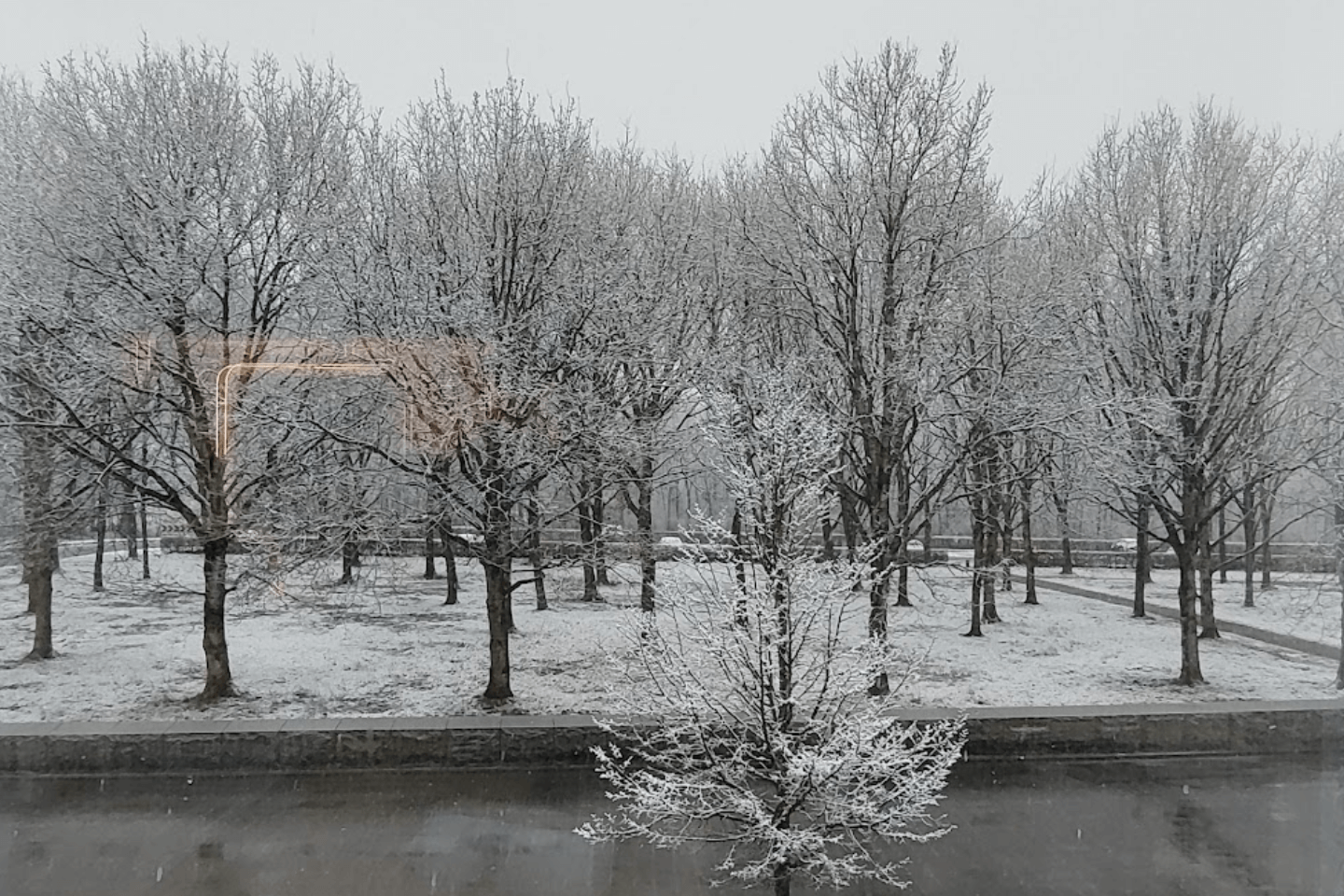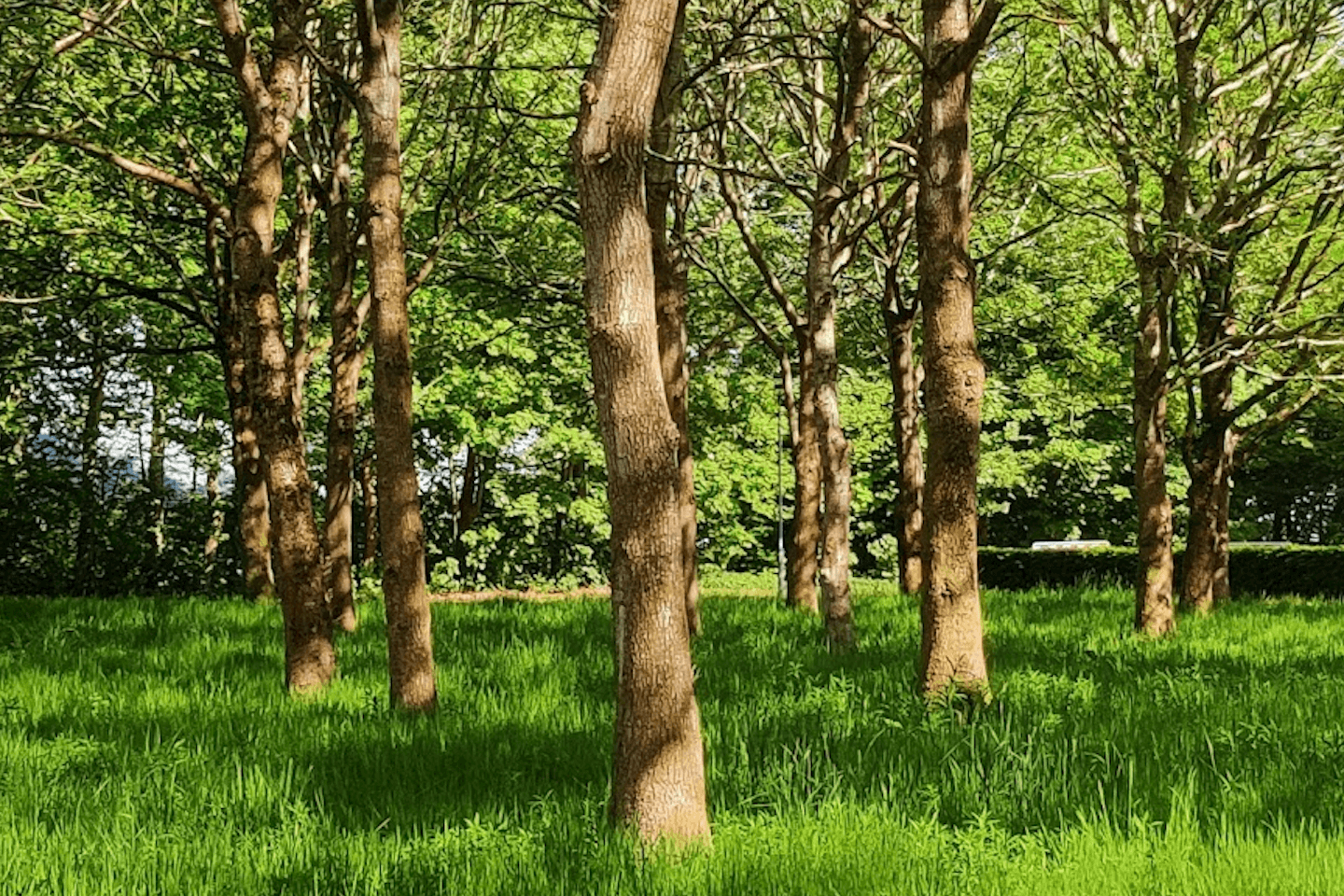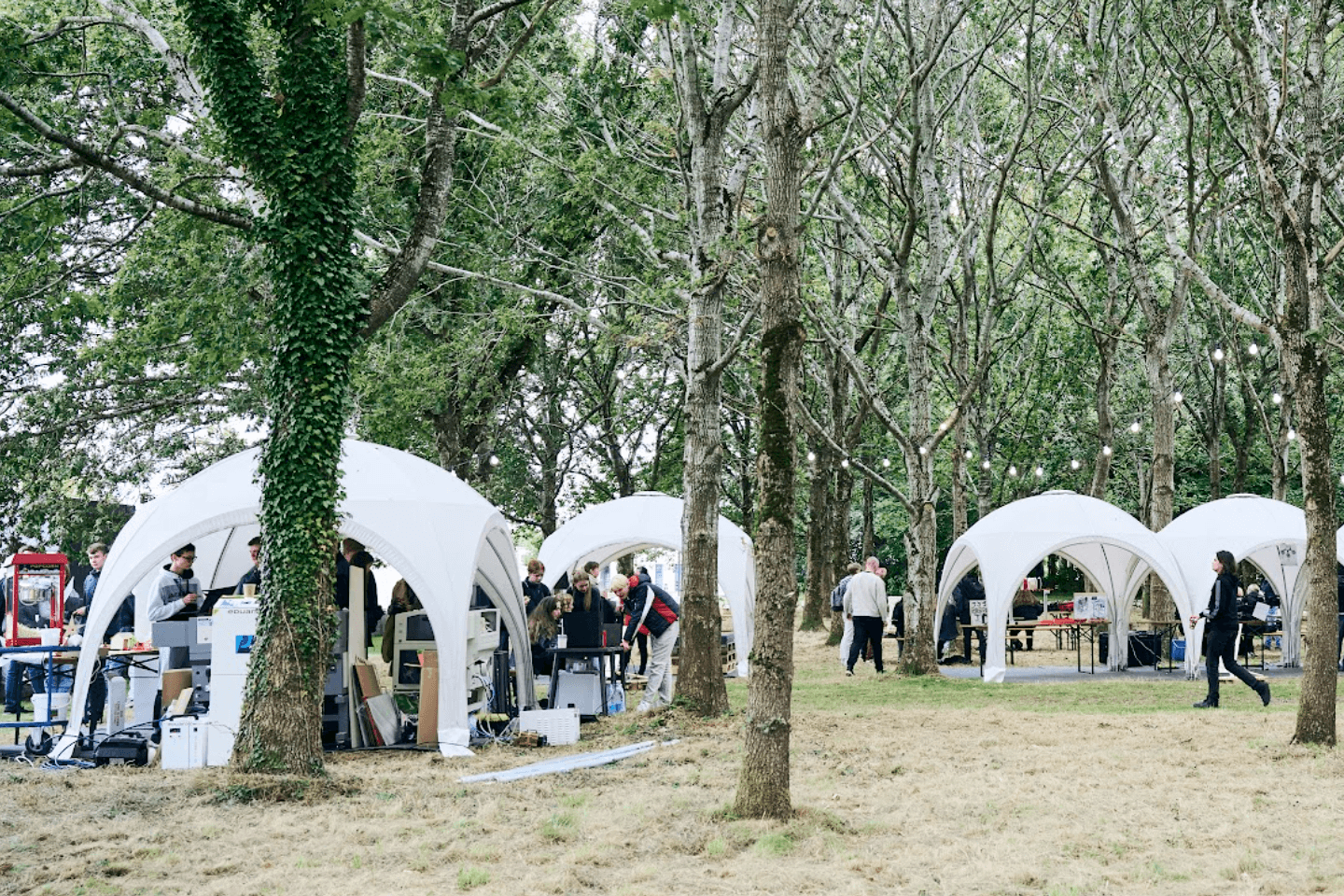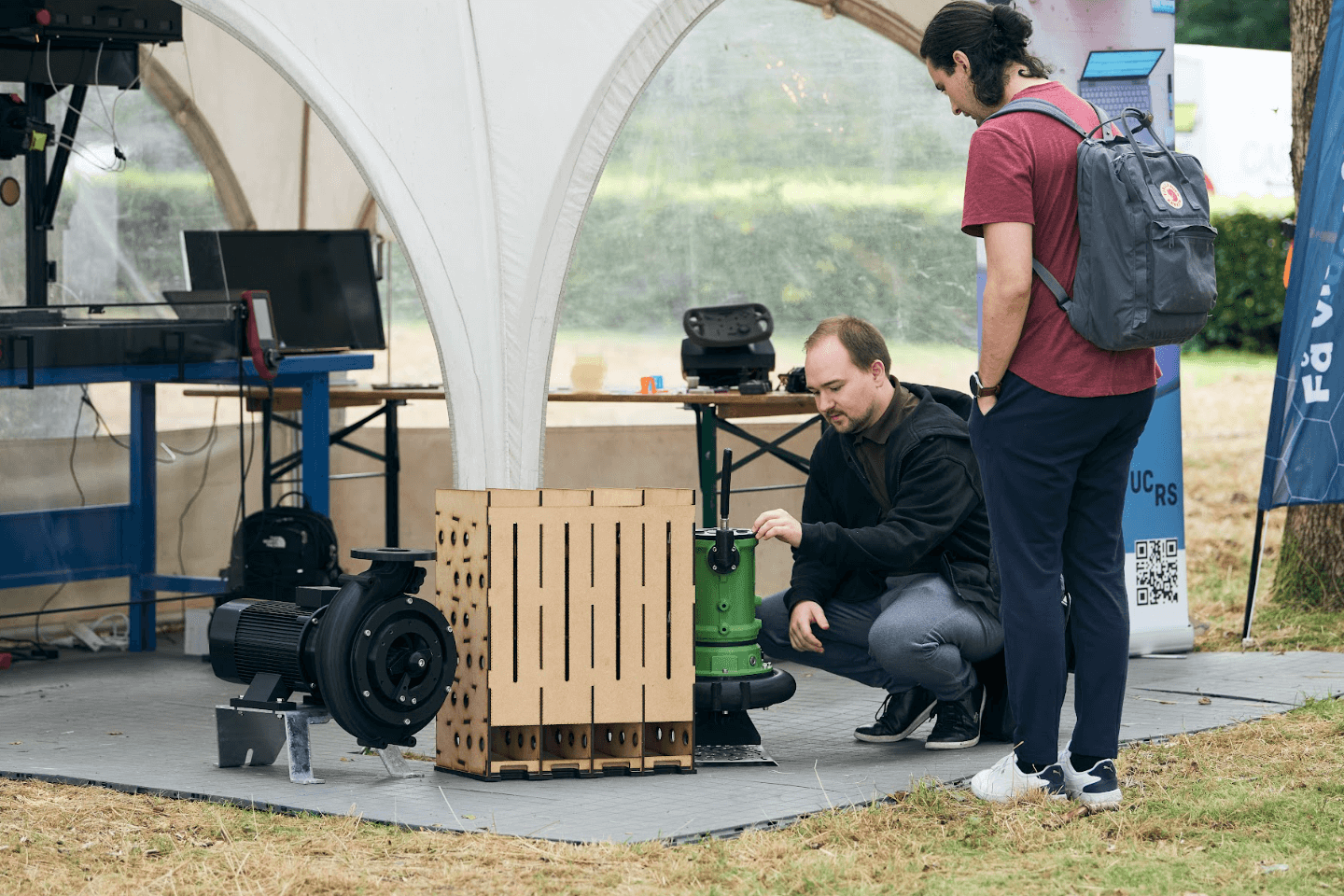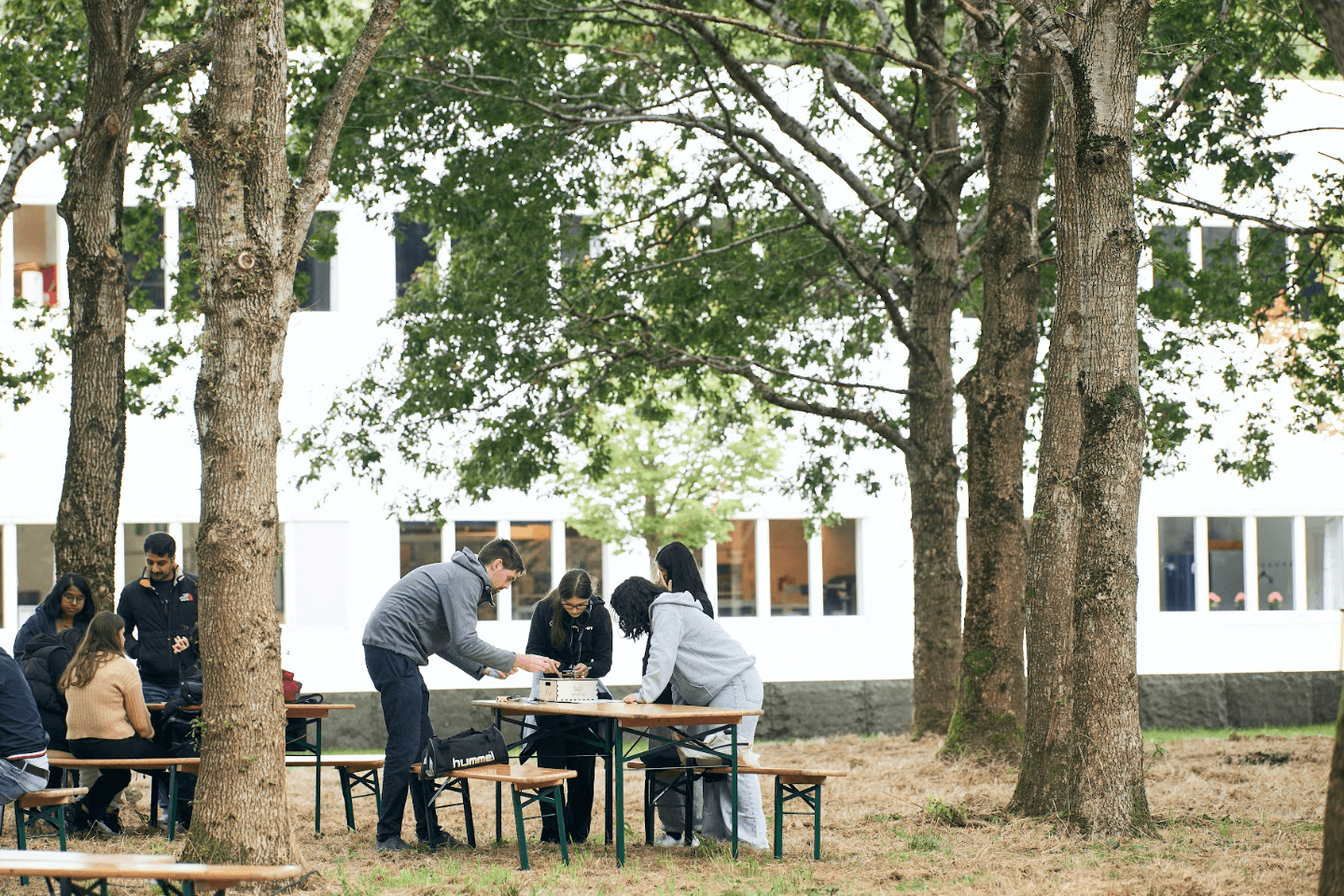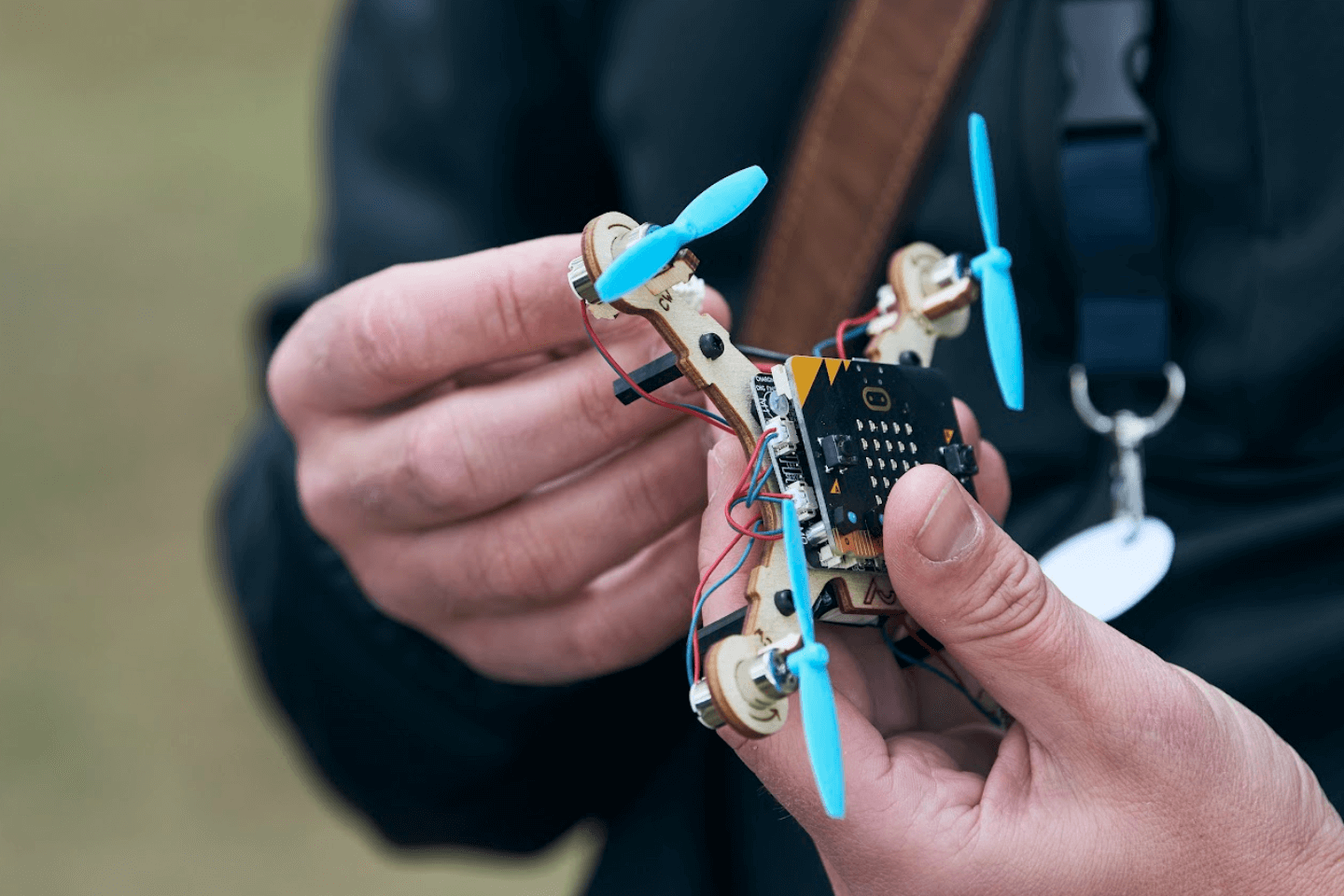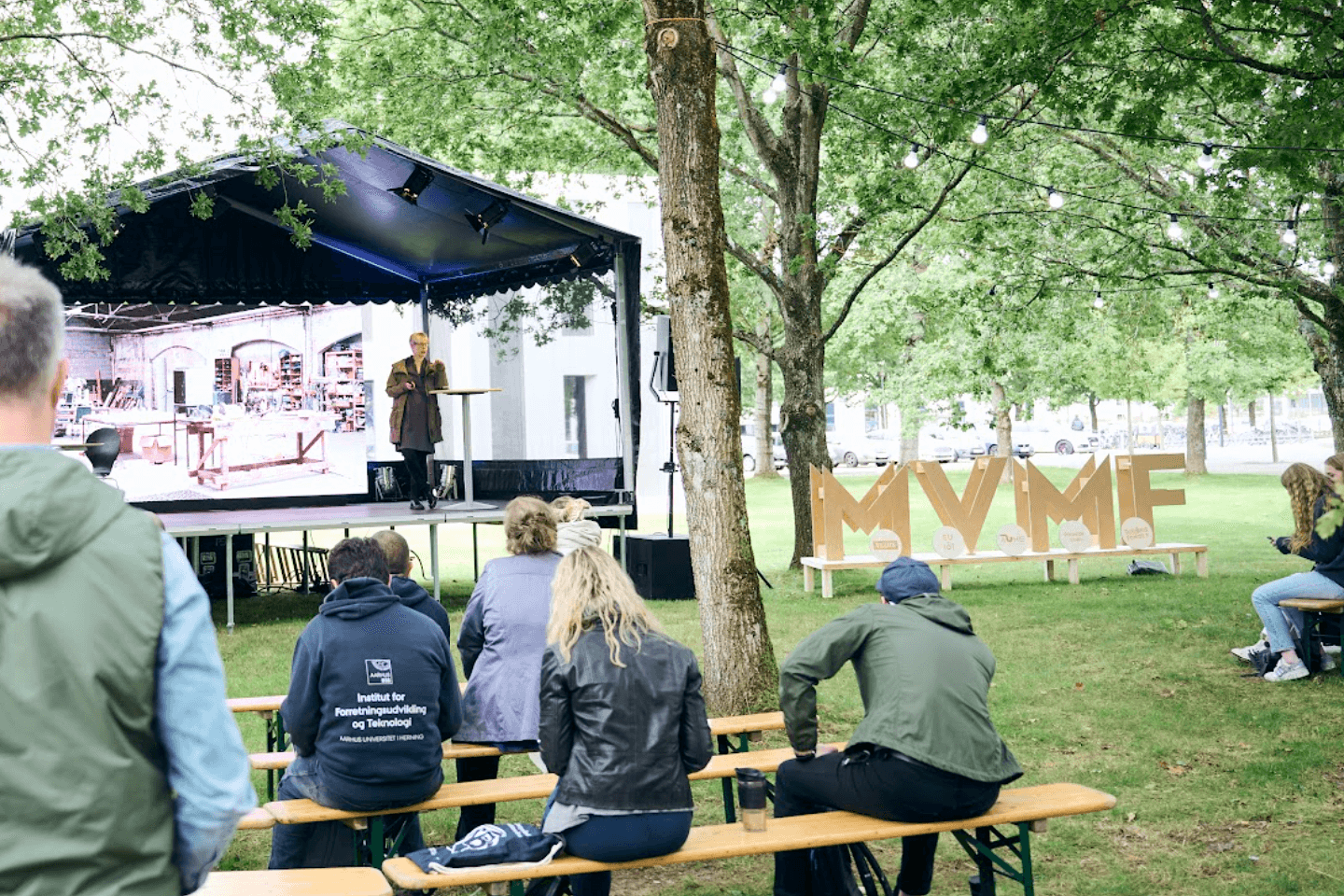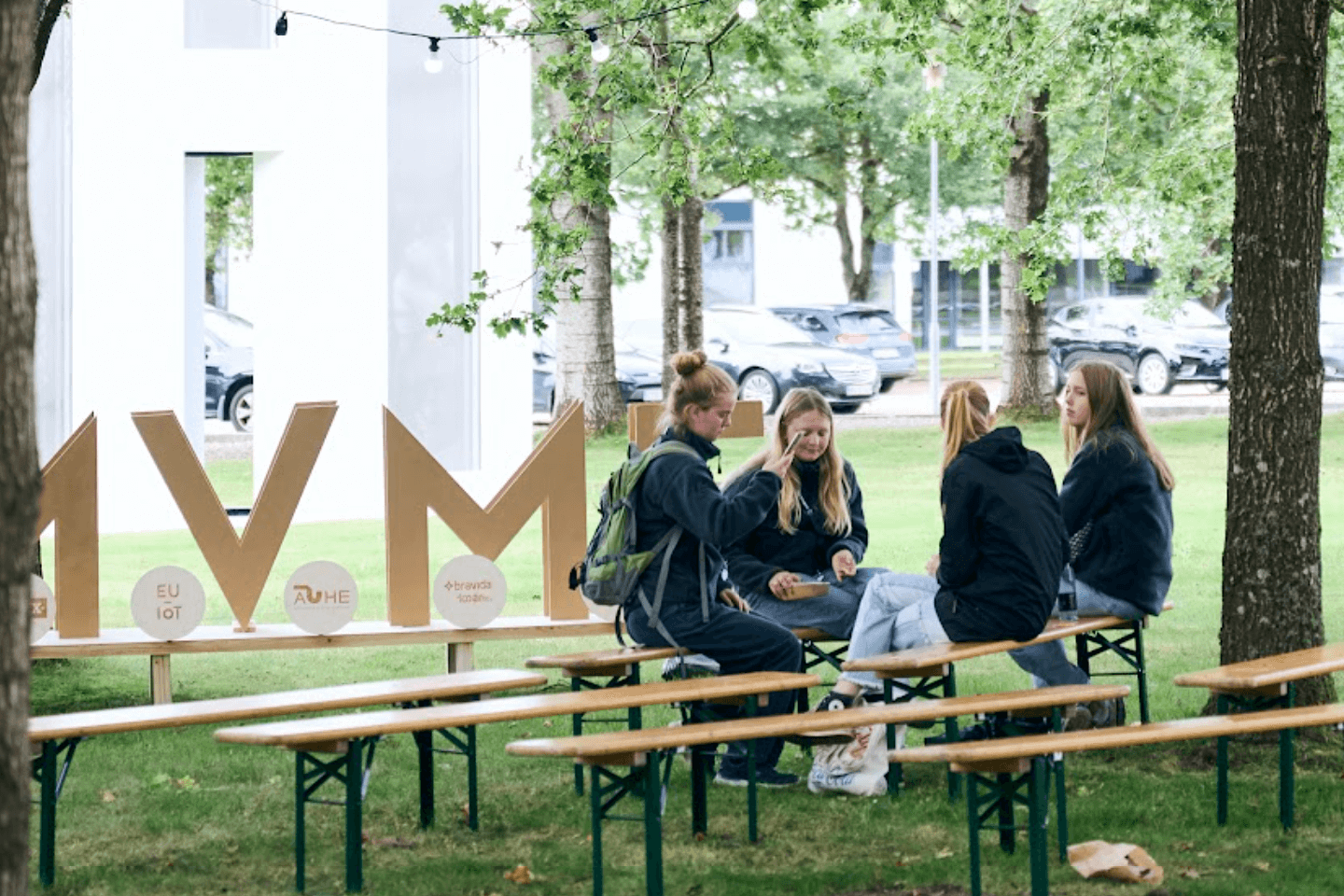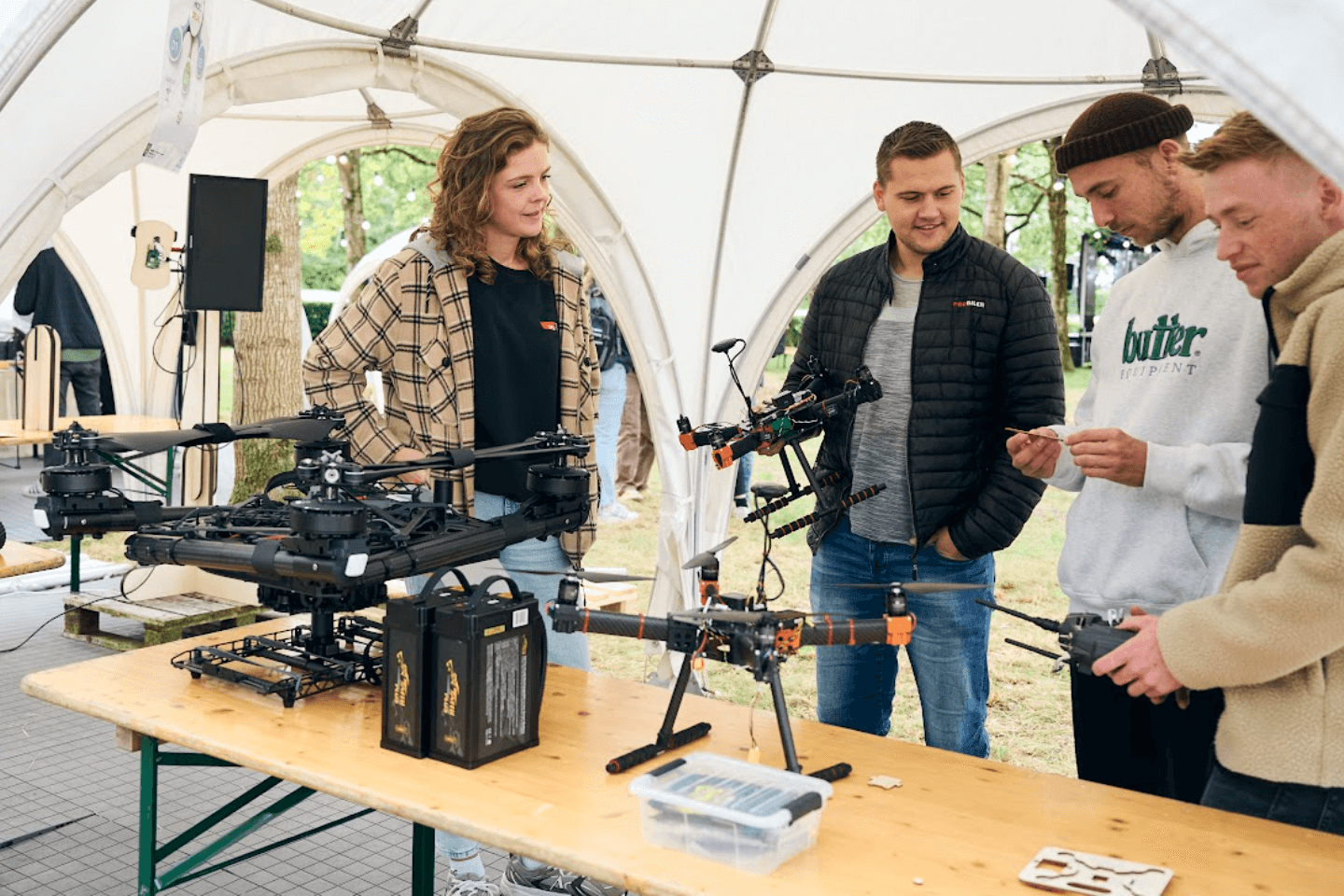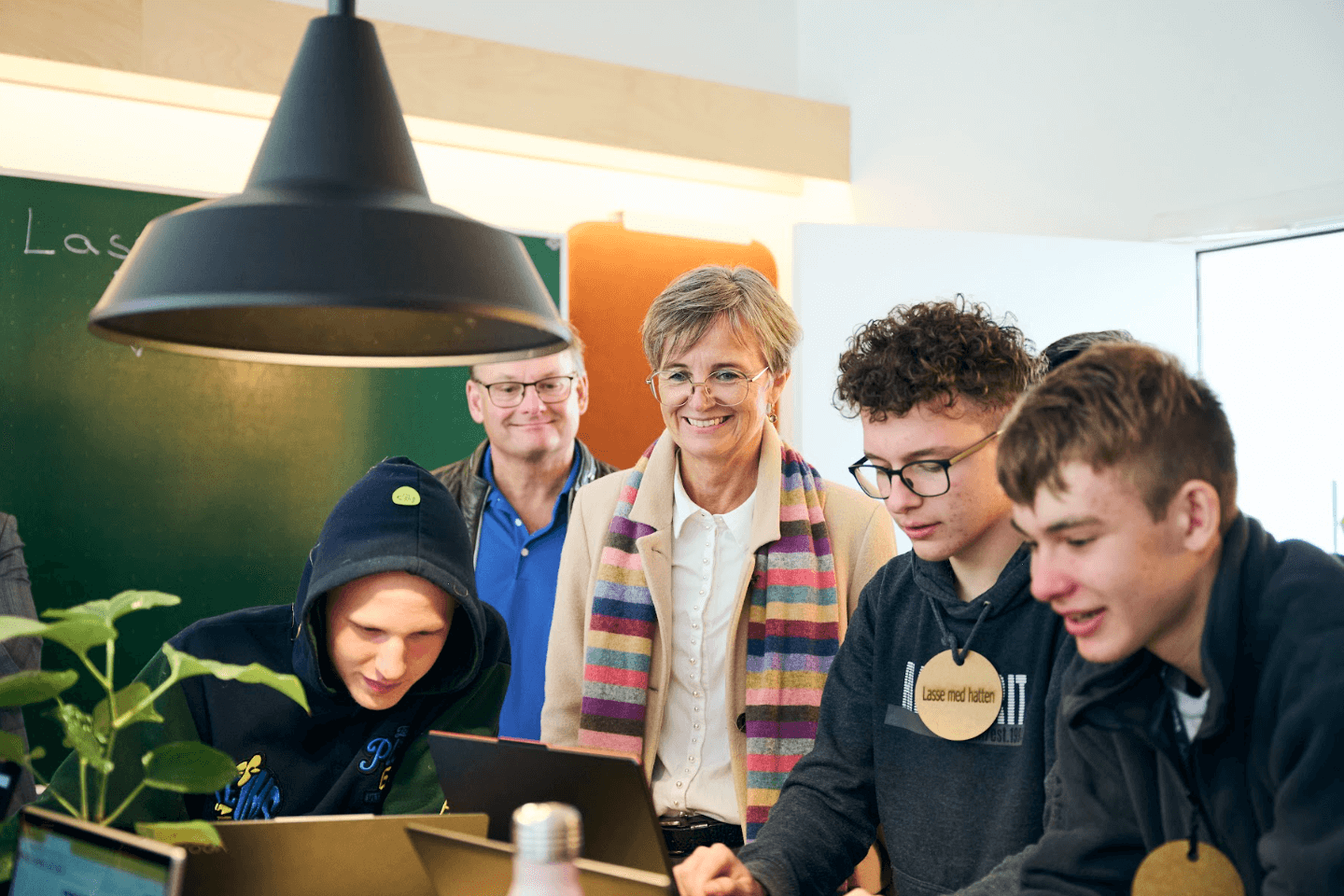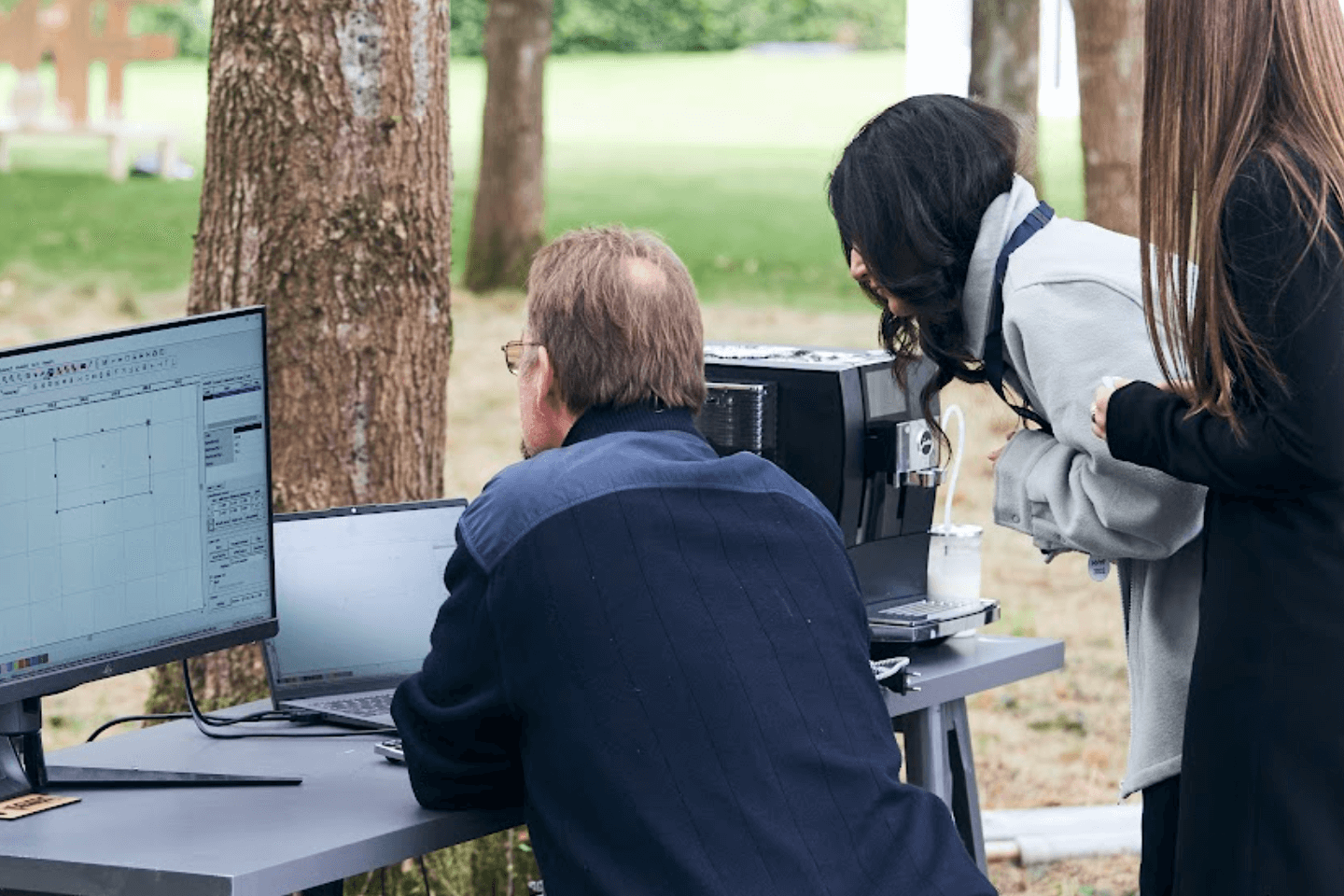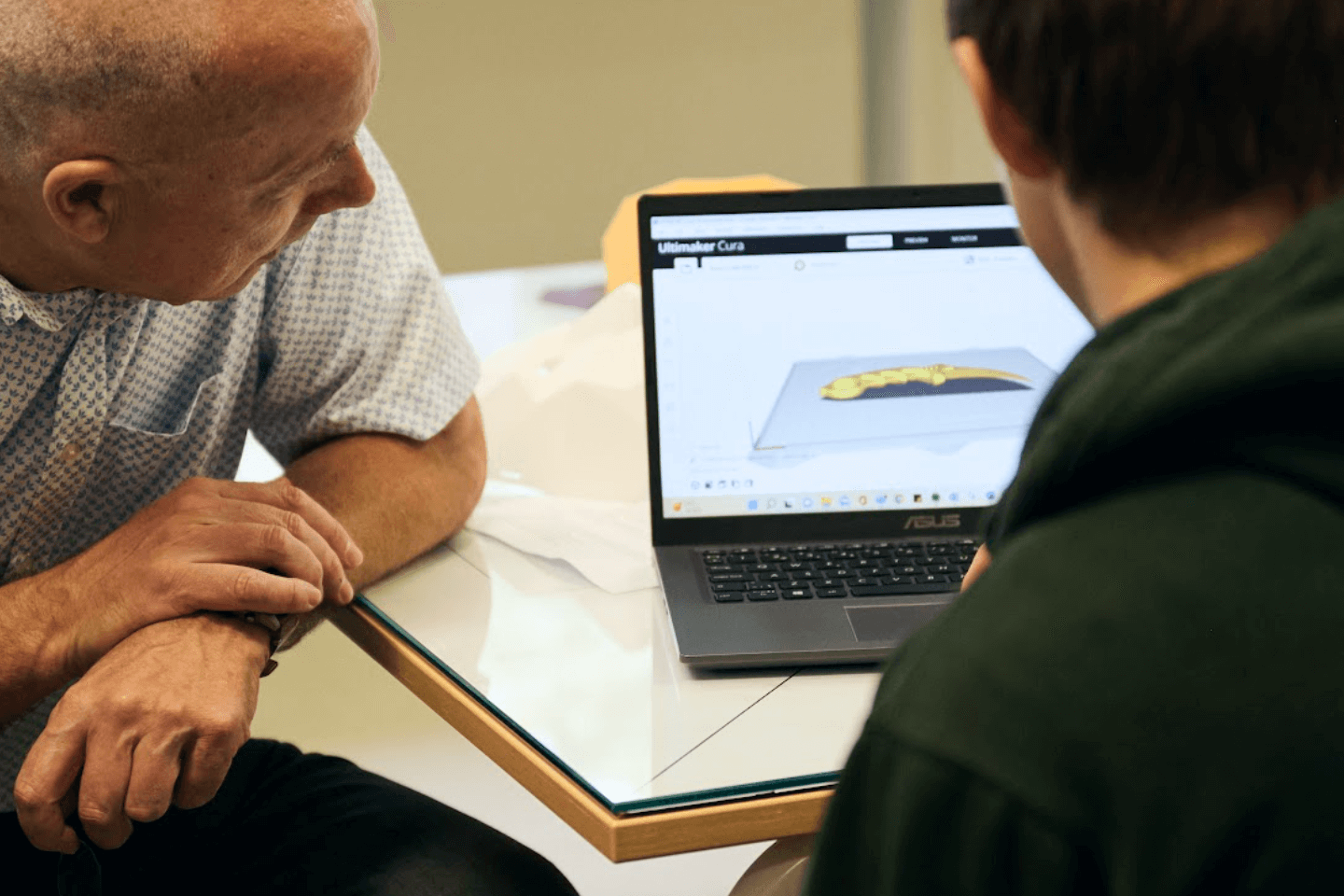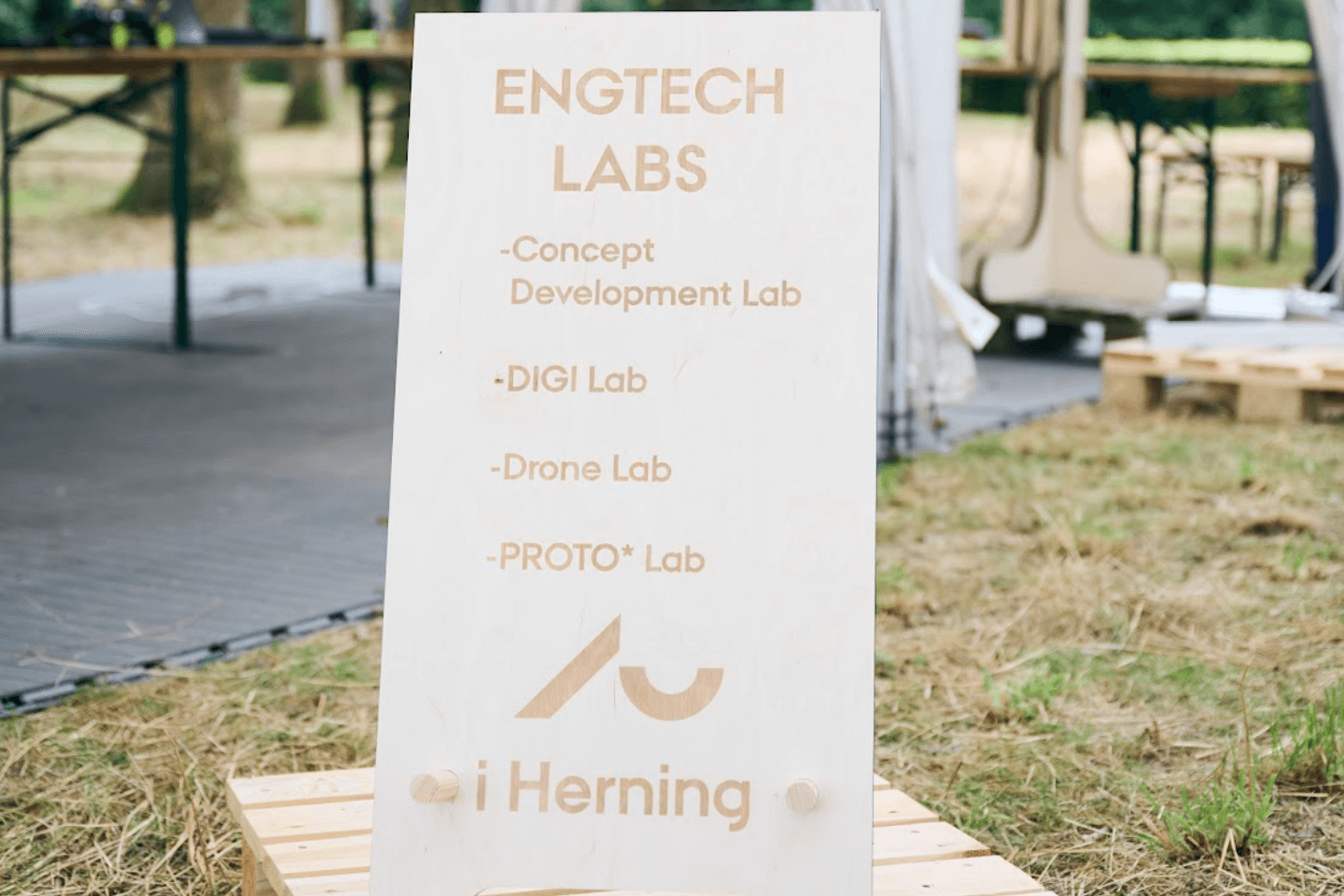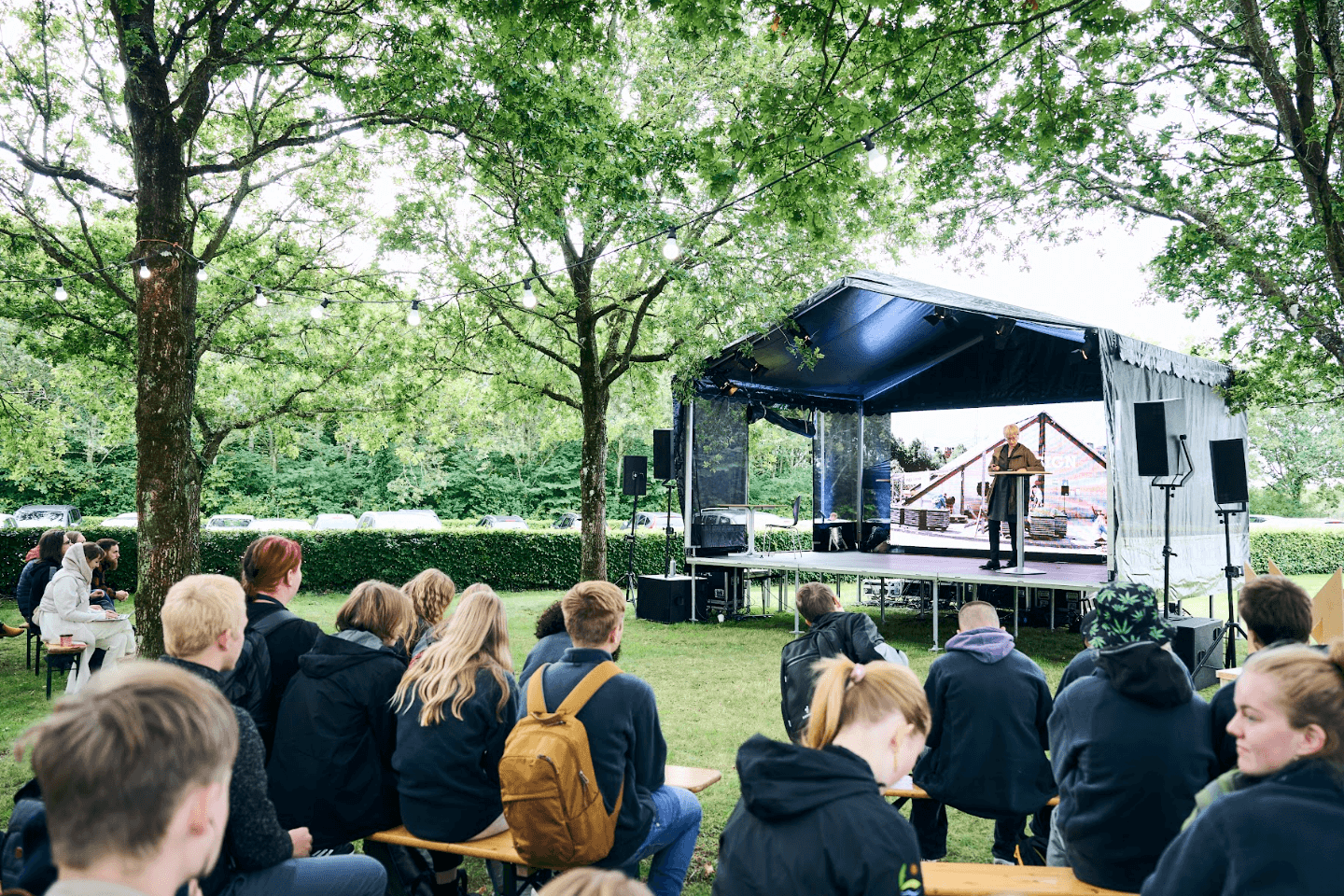- Placemaking within a grove of oak trees
- Gathering digitalisation and sustainability with digital craftsmanship
- Prototyping a maker festival for interpreting digital craftsmanship in a region

The seed for this project is a grove of trees. The trees are oak, arbitrarily aligned and barely in a grid, on a plot of land next to the university building of Aarhus University, and plot is owned by the Herning municipality. The trees offered themselves as a daily view from the windows of PROTO* lab. This banal grove of about 70 odd trees and the covered space below their crowns were inspiring when looking out of the windows or walking through it. It was inspiring just as some places are, in which they can indicate and shape a possibility, and make people act. A place can seed in ideas, it can present itself to play, a place can make people plan, it can provoke. One can suppose it is referred as ‘placemaking’, because the place comes before making. It is the place that makes, engaging with a place gives agency.
There is much effort and discussion on bridging sustainability and digital technologies, especially within teaching, courses and projects at the BTECH campus in Aarhus university. While there are certain valid concerns surrounding such a mix, it becomes necessary to collaboratively clarify and articulate how and when these two entities can be gathered together. To bring this discussion on digital technologies and sustainability that otherwise occurs inside classrooms and labs of BTECH in Herning, out into the open amidst the oak trees I saw as both, a design and pedagogical provocation. The opportunity presented itself as a design act for placing sustainability and digitalization together by inviting the wider community into such a discussion. So the viewing of the trees on campus as an architectural site became a call and aim to design and implement the gathering of these two topics as an event. Discussions with the department’s management gave rise to the possibility of collaborating and inviting municipality supported makerspaces from across the region. This led to conceptualising a maker festival as an event that could gather stakeholders to discuss and demonstrate about digital craftsmanship, and draw connections between sustainability and digitalisation from the Danish mid-west region at the campus of Aarhus University in Herning.
In architectural practice to site and locate, is part of the design action. To envision a place of its potential and facilitate a place to transform itself, is to make design work. To get the management on board, to build a project team, to bring in external stakeholders, to raise funding, to design visual identity to the project, to plan and make construction drawings and to get permits from the city, all this happened because a place with oak trees presented itself as having the ability to hold a discussion on digital craftsmanship, gathering sustainability and digitalisation underneath its crown, as a maker festival. This then is nothing esoteric or as a mystery of the mind, it is about architecturally prototyping an event, since it was the first event, there was only to do and learn.

The department’s management was well supportive of this proposal as the project from the start integrated a key institutional attribute into the project. The consideration of this attribute is what made the project engagement scale up and become an exploratory study which could gather opinions and views about digital craftsmanship. This attribute was Aarhus university’s contract as a satellite campus in Herning to engage with seven different local municipality governments from the mid west region of Denmark. The project started to engage with municipality supported makerspaces from across the region and brought seven different entities including makerspaces from three different municipalities to be stakeholders in the maker festival at the campus. This began the process of participatory design of the event with the various stakeholders which in turn snowballed the project bringing in funding, participation from schools, companies and civic organisations thereby increasing resources and visitors over a three day event. After the success of the first maker festival event in 2022, the department has decided to make the festival into a yearly event.
Event Concept, Design, Identity and Management: Karthikeya Acharya
Department and Section Development: Prof. Anders Frederiksen and Associate Prof. Mirko Presser
Festival Project Managers: Benedicte Ravn and Matteo Campinoti (Web)
Stakeholders: ITC Lem, Elvaerket, Baerdygtig Herning, Eduard.dk
Project Funding: Velux, Tuborg Fondet, EU IoT, Bravida, AUHE and Internal Departmental BTECH funding
